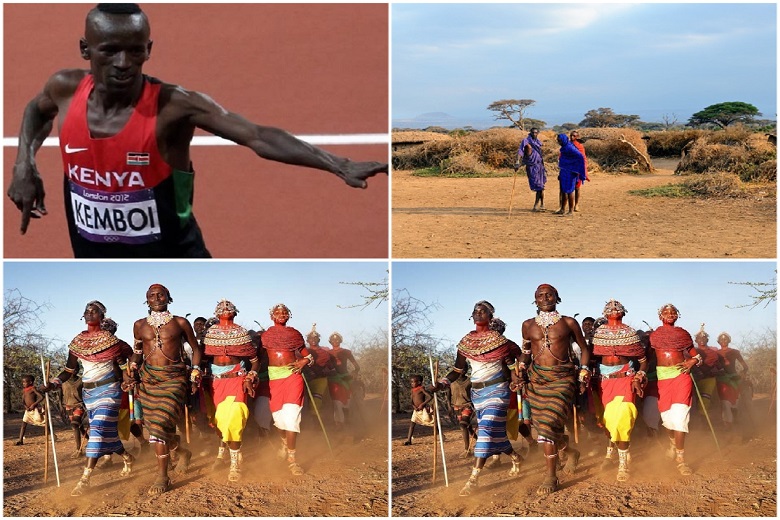The Kalenjin people are Kenya’s internationally recognized sporting glory. Of the ten Olympic medals won by Kenyan runners, seven belong to the Kalenjin tribe. Their total number exceeds 5.5 million. This is approximately 12% of the total population of Kenya. They are mainly engaged in cattle breeding.
Of the ten Olympic medals won by Kenyan runners, seven belong to the Kalenjin tribe, dispassionate statistics show. Athletes from Kenya won another evidence of world sports statistics: in 2010 alone, 126 marathon races out of 156 holds in different countries.
Life of a “mixed” tribe
Modern ethnographers claim that the collective term “kalenjins,” meaning “I have told you,” was introduced into scientific circulation less than 80 years ago. The term became widespread because the Kalenjin tribe is a mixture of ethnic groups. These peoples, in particular, the Kipsigis, Marakwet, Nandi, Pokot, Sabaots, Ogiek, Elgeyo, live mainly in Kenya, in the Kerio Valley. They are mainly engaged in nomadic and semi-nomadic cattle breeding.
The traditional dwelling of all Kalenjins is a hut. The frame for it constructs from solid branches, and the roof of the structure is grassy. Such a dwelling is easily and quickly erected on a new pasture. The Kalenjins live in the Kenyan province of Rift Valley, on a plateau with an altitude of 1500 to 2500 meters above sea level. The Kalenjin also inhabit a part of neighboring Tanzania, with approximately 180,000 people. They also live in Uganda.
Traditional Kalenjin clothing use to make from animal skins. The appearance of men and women was “weighed down” by copper earrings stretching the earlobe to the shoulders. But now, a representative of this tribe cannot be distinguished from a city dweller. The favorite clothes of modern Kalenjin are bright T-shirts with the logo of a famous foreign brand or a photo of a celebrity.
Family way of life
Kalenjin initiation takes place not once but every seven years. Thus, they move from one age and social status to another. After the first initiation, the boys retire to a kind of “exile,” during which they must demonstrate all their skills and prove that they are worthy of the title of Man and Warrior.
Family relationships in the tribe are polygamous. But not every man can afford polygamy since a unique ransom demand for each bride. Having children is always good news (it doesn’t matter if the parents are married). But raising children is also expensive, which is why Kalenjin families usually have few children.
Traditionally, only families that have brought offspring can bury by the Kalenjins, and the “childless” in some villages can be left to be torn apart by hyenas.
Super Runner Tribe
Sports science claims that the average Kalenjin tribe can overtake 90% of the world’s population! Just a few months of training is enough for boys and girls from this tribe to leave behind the professional runners of the rest of the world at official sports competitions.
The achievements of the African tribe runners haunt the sports world. Hundreds of scientists are studying the phenomenon of invincible Kenyan athletes.
Some argue that the secret hide in a particular gene – “natural doping,” hidden by nature in the body of the Kalenjins. Others see the reason for the records in the natural conditions of the tribe. Still, others talk about the lifestyle of nomadic pastoralists and their diet
The latter indicates that modern Kalenjin graze cattle on high mountain plateaus, where they breathe thin air with low oxygen content. Moreover, children help adults. Even at five, they have been running, driving cattle, more than a dozen kilometers. The result is an achievement in sports in adulthood.
Sports nutrition experts point to the wealthiest energy source hidden in the tribe’s favorite dish – Ugali. This corn porridge is one of the most flavorful in Kenyan cuisine.
Kenyan runner culture
Oral tradition was and is for the Kalenjin an essential aspect of learning about the world. Even before the advent of writing, fairy tales, like the myths of ancient Greece, served to transfer knowledge and everyday history.
Now the Kalenjin have four main types of oral creativity: a fairy tale, a saying, a riddle, and a song. Their heroes are most often animals endowed with certain qualities. Thus, the lion is always proud and brave, the hare is adventurous and fast, and the hyenas are usually mean. Kalenjin songs generally accompany their work, games, rituals. Proverbs are a favorite tool of elders when dealing with young people.
Kalenjin dances originated from their everyday activities. Thus, men’s movements resemble archery, grazing, hunting, and women’s movements resemble household duties: washing, cooking, growing corn.
Crafts are not as widespread in the Kalenjin as in other parts of Kenya. However, for export, women make calabash from pumpkins decorated with beads and a national pattern.
